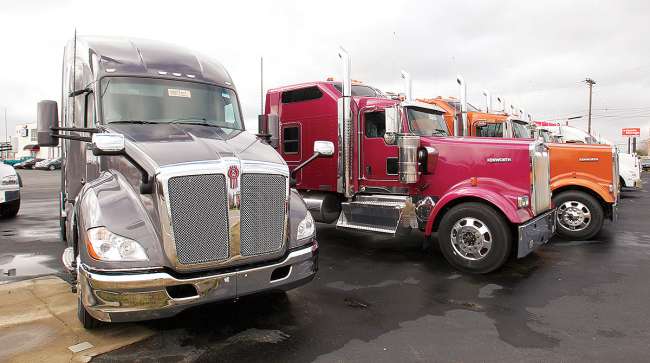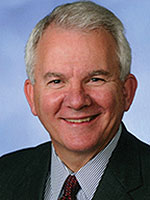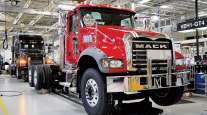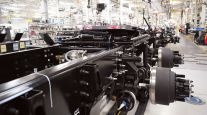Senior Reporter
January Class 8 Orders Slow After Record Demand in 2018

Class 8 orders for January fell to 15,800 as fleets took a wait-and-see attitude on freight demand and following massive orders in 2018 that mostly filled the system for this year, according to ACT Research Co.
ACT cited preliminary data it would revise as needed once final numbers from the truck makers were available.
January orders dropped 68% compared with a year earlier when orders began to skyrocket, and were the lowest since October 2016 when Class 8 orders were 13,907.
NA Class 8 Orders Declined Sequentially and Year-Over-Year
Preliminary North America Class 8 net order data show the industry booked 15,800 units in January, down 26% from December and 68% from year-ago January. #HeavyDuty #Class8https://t.co/husjYEPxuy pic.twitter.com/ZDgxjivdYI— ACT Research (@actresearch) February 6, 2019
A year earlier, January orders were 49,136 and on their way to an annual record of 490,100.
“It’s still a situation of the industry operating on all cylinders. There’s just not a lot of capacity to accept new demand,” ACT Vice President Steve Tam said.
On top of that constraint, truck buyers are exercising some restraint as they try to judge what freight demand will be like in the fourth quarter, Tam said. Also, companies used provisions in the 2017 Tax Cuts and Jobs Act to pull forward truck orders.
Many in the industry are watching what will happen regarding more U.S.-imposed tariffs on China, he added, which, barring a trade agreement, are scheduled to be implemented March 1. “Ultimately, that would be detrimental to freight and demand for trucking services.”
Tam said it was not hard to “conceive of a scenario” where there is actually a manufacturing, or sectoral, recession in the United States this year or next.
But the broader economy will remain “buoyant” and driven largely by consumer spending, he added.
Research firm FTR pegged orders at 15,600, and noted there is no need to panic.
Given the enormous backlog, “the key will be how many of these trucks get built and when,” said Don Ake, FTR’s vice president of commercial vehicles.
“The production rates the first few months of the year will be a better indicator of Class 8 demand than current orders are,” he said.
At the same time, the truck-market correction is beginning to take shape, said David Kriete, CEO of Kriete Group, a Milwaukee-based, multilocation truck dealership.
“All truck makers have instituted stricter order board business rules over the past six months resulting in only sure [orders], rather than speculative ones, to be placed into the system,” Kriete said.
He called the orders slowdown “natural and healthy” considering the backlog still in the system.
“I just left the Hino, Volvo and Mack annual business meetings and all three OEMs are not worried at the slowdown at all,” he said. “As order books open up for 2020, we will likely see a conservative increase again. However, with stricter, more [punitive] business ordering rules in place I wouldn’t expect a huge spike in orders once the 2020 order book opens.”
Volvo Trucks North America and Mack are units of Volvo Group.
Hino Trucks U.S.A is a Toyota Group company.
One truck maker executive said the time was right for expanding facilities to increase efficiencies.

Armstrong
“We’re going to be investing in a new paint shop in Chillicothe, Ohio [where Kenworth Truck Co. vehicles are assembled]. So that’ll be a pretty sizable addition, and we’ll redirect the current paint shop to be more involved with assembling capacity,” Ron Armstrong, CEO of Paccar Inc., said in a recent earnings call.
Kenworth and Peterbilt Motors Co. are Paccar truck brands.
Meanwhile, Tam said routine ordering continues.
Frederick Holzgrefe, president of Saia Inc., said the carrier plans to spend on new equipment, too.
“It’s roughly $184 million. That’s for all revenue equipment. So, that’s tractor, trailers, forklifts,” for delivery in the first and second quarters, Holzgrefe said in a recent earnings call.
Saia is a less-than-truckload carrier based in Johns Creek, Ga.
And if the economy slows?
“We would retire older equipment more aggressively,” he said. “So, then, in that situation, you actually get a maintenance-favorable trade out. You’ve taken out the older equipment that is a maintenance drag.”
Saia Inc. ranks No. 27 on the Transport Topics Top 100 list of the largest for-hire carriers in North America.




